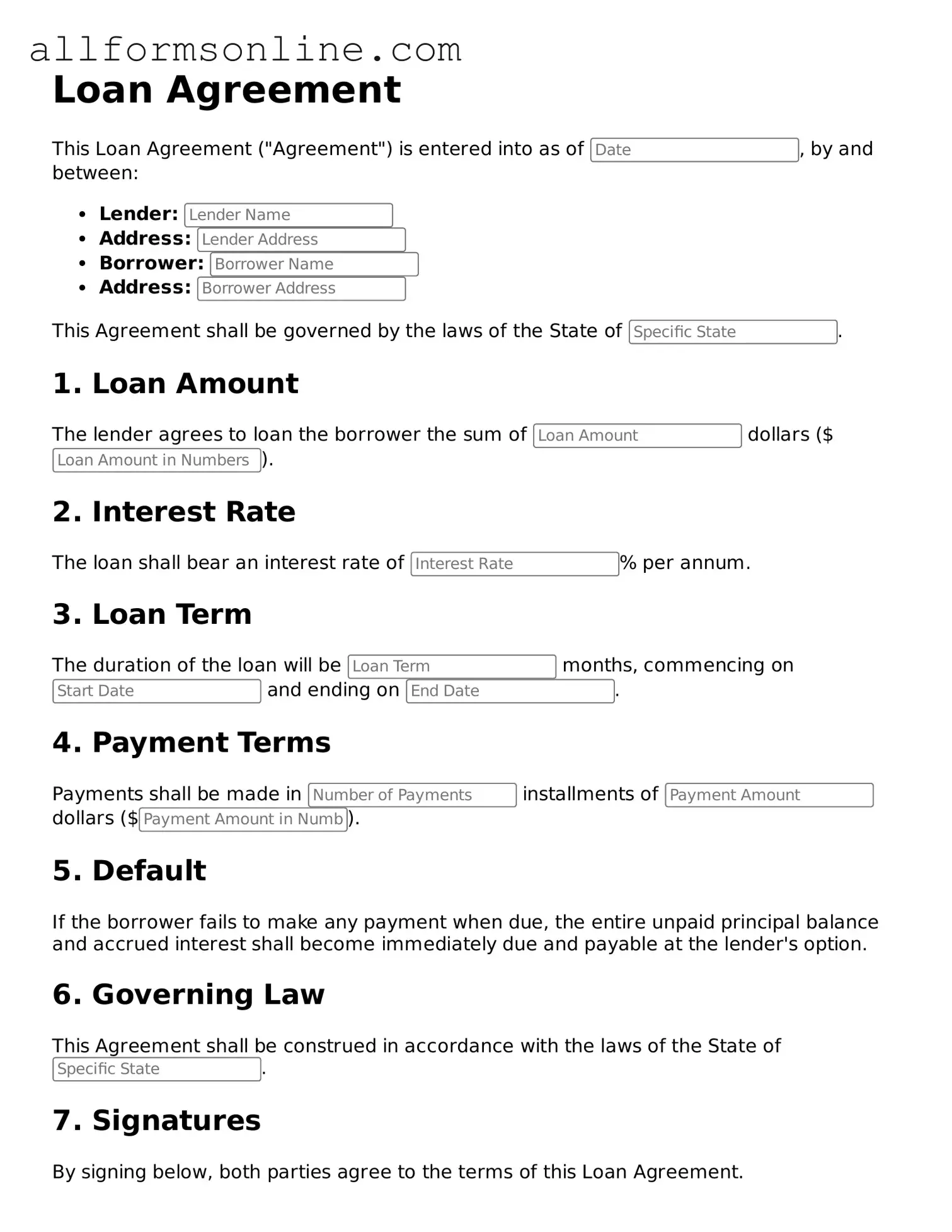What is a Loan Agreement form?
A Loan Agreement form is a legal document that outlines the terms and conditions of a loan between a lender and a borrower. It specifies the amount borrowed, interest rates, repayment schedule, and any collateral involved. This form serves as a binding contract, ensuring that both parties understand their rights and responsibilities. By having a written agreement, potential misunderstandings can be avoided, providing clarity and security for both the lender and the borrower.
What information should be included in a Loan Agreement?
When creating a Loan Agreement, it’s essential to include specific details to ensure clarity. Key elements typically include the names and addresses of both the lender and borrower, the loan amount, the interest rate, repayment terms, and the due date for payments. Additionally, any penalties for late payments or default should be outlined. If applicable, details about collateral, such as property or assets securing the loan, should also be included. This comprehensive approach helps protect both parties and provides a clear framework for the loan.
Can a Loan Agreement be modified after it is signed?
Yes, a Loan Agreement can be modified after it has been signed, but both parties must agree to the changes. Any modifications should be documented in writing and signed by both the lender and borrower to maintain clarity and enforceability. This might include changes to the repayment schedule, interest rates, or other terms. Keeping a record of any amendments ensures that all parties are on the same page and helps prevent disputes in the future.
What happens if the borrower defaults on the Loan Agreement?
If a borrower defaults on a Loan Agreement, it means they have failed to meet the terms of the agreement, such as missing a payment or not repaying the loan as agreed. The lender has several options in this situation. They may choose to contact the borrower to discuss the issue and explore possible solutions. If necessary, the lender might initiate legal action to recover the owed amount, which could include seizing collateral if it was part of the agreement. Defaulting can also negatively impact the borrower’s credit score, making it more challenging to secure loans in the future.
